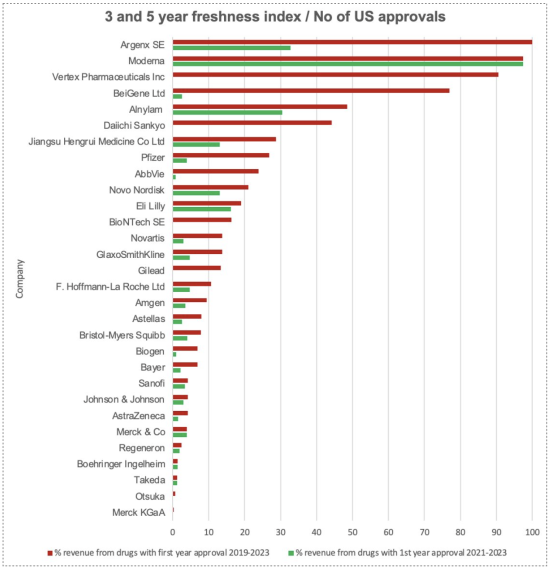
Most of this post is to share the interesting paper here, The significance of blockbusters in the pharmaceutical industry. Its main conclusion is that drugs need to sell well to repay their own investment - perhaps obvious, but worth demonstrating, all the same.
Here’s a list of the drugs launched by the ‘top 20’ in the period 2011-2020, that generated mean annual sales over $1bn:

Note how few drugs of the 168 in this cohort earned over $1bn per year, in mean annual revenue. Only 2 returned over $5bn per year, only 4 over $4bn. Even if you take Novartis’ new idea that they’ll prioritise drugs that will generate over $2bn per year, only 10% of this cohort achieved that, none of them from Novartis. (They did manage to get two drugs over $1bn per year, from that decade’s haul of 14 approvals).
And here’s the bottom of this list…

Now, consider how many companies still look at, and organise against, analyses of ‘productivity’ that take ‘approval’ as the goal. But, as this paper shows, there are a lot of companies who high-fived over an approval, but have had to sit on their hands ever since. R&D ‘Productivity’, even before the Inflation Reduction Act, can’t be divorced from its commercial imperatives.
There’s no perfect measure of ‘success’ in pharma, but the analyses from places like Deloitte show the same thing in different ways… Pharma has a ‘return problem’. (They call it ‘Return on Innovation’, but really it is Return on Invention.)

At the bottom of all of this is the very evident conclusion that the same or similar drugs, in different hands, achieve very different outcomes. There is no average company, in terms of how they add value to their pipelines. (A second glance at that Deloitte chart shows the spread from top to bottom performer in each year is always wide.)
The commercial space may have its own science, and art, but it is hard to claim that pharmaceutical markets are less predictable than biology. Knowing which market position a drug is headed towards should lead to a good (not perfect, but good) assessment of business viability. Unfortunately it is often done after a decision has been made on which market (and with which label, etc.) the drug will hit, so the ‘forecast’ is typically progression seeking, and optimistic. For example, forecasts are typically not sought for markets the drug is not headed towards, so there is little optionality - little ‘greener grass over there’ provided during the process.
It is entirely possible that costs for Development will continue to rise, for revenue generated by new drugs to decline, and for there to be losers in the wash-out. This is a future that will not be halted without a diagnosis of the real problem, and the only true measure of productivity: drugs that repay their investment, and more.
IDEA Pharma
We work with clients early in lifecycle, crafting a compelling product story and building a best-in-class strategy that helps every molecule reach its potential. It’s what we do best. And there’s nobody that does it quite like us IDEA Pharma
